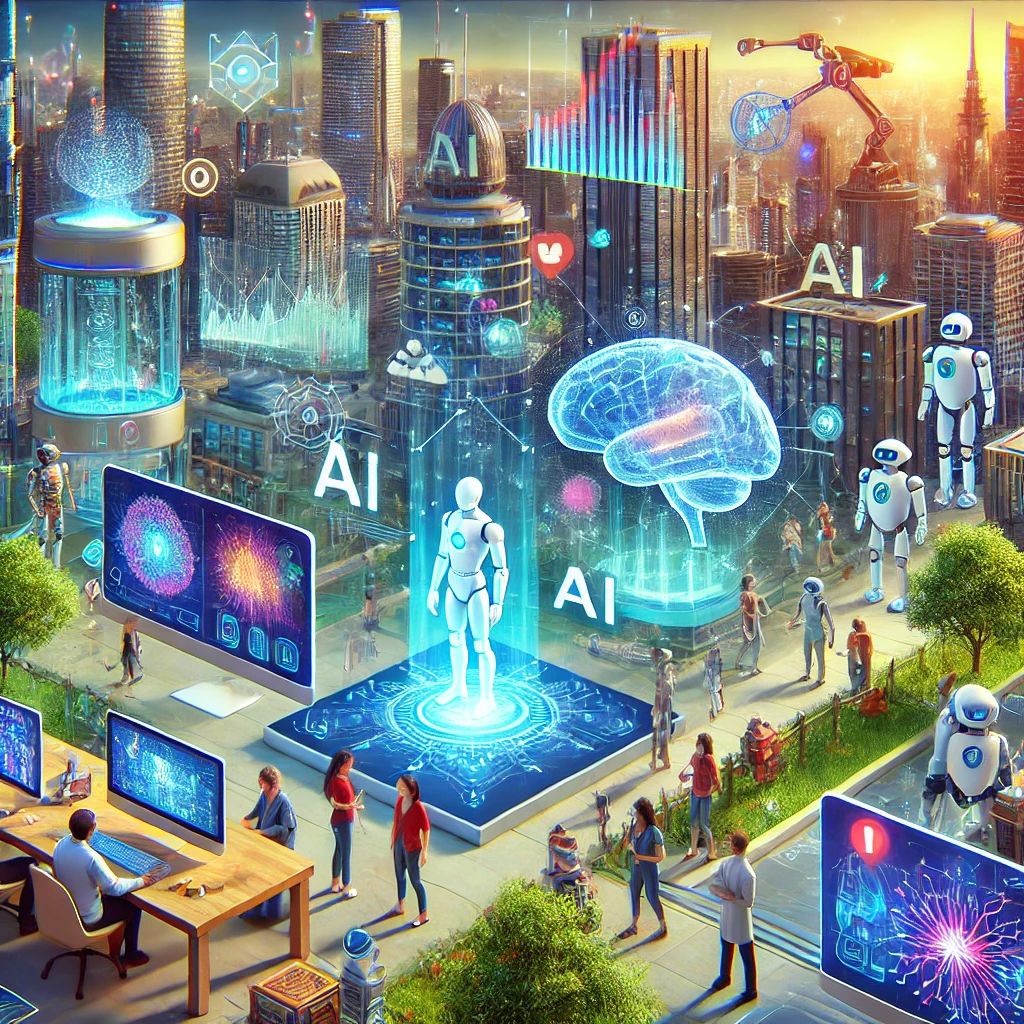AI and Machine Learning technologies create a new era in digital transformation that affects technological development at every level. Current industries make AI and ML essential components because they automate tasks while generating profound analytic insights from data. Intelligent systems have completely altered business operations while offering new possibilities for everyday life that humanity could not have predicted. AI functions as a synthetic intelligence system alongside Machine Learning which enables programs to acquire information.
What is AI and Machine Learning?
Understanding AI
Artificial Intelligence (AI) refers to the simulation of human intelligence in machines. Artificial Intelligence provides technology with capabilities to duplicate human cognitive abilities when completing decision tasks while solving problems with human-like understanding.
Understanding Machine Learning
Among the multiple AI variations Machine Learning functions as the subset which enables programs to enhance their capabilities through automated data instruction without human-written code. Through analysis of previous records ML systems find patterns which enable them to make future forecasts.
Key Features of AI and Machine Learning
- The combination of AI and ML enables companies to automate their repetitive along with complex work processes for better operational effectiveness.
- The artificial intelligence system uses its ability to analyze extensive datasets for producing insights and predictions.
- NLP technology allows computers to both interpret human language and process it for operational purposes.
- Using AI technology Computer Vision serves as a system that analyzes visual data and interprets the information.
- ML models enhance their operational efficiency through incremental data learning which occurs during continuous exposure to new information.
- Billions of businesses apply AI systems for processing data which enables them to execute instant tactical decisions.
How AI and Machine Learning Work
The correct functioning of AI and ML depends on different algorithms combined with data processing methods.
Components of AI and ML
- Neural Networks as a reference to the functioning of human brains enable Artificial Intelligence systems to discover patterns and establish data relationships.
- The training of prediction models with supervised learning occurs through using labeled datasets.
- The process of Unsupervised Learning enables systems to detect order among untagged data structures and patterns.
- The learning process of machines occurs through trial-and-error where their decision-making ability improves with time.
- Deep Learning employs various layered neural networks to conduct extensive problem-solving tasks.
Real-World Applications of AI and Machine Learning
AI in Daily Life
- People use voice assistants such as Siri and Alexa to activate them through verbal instructions.
- These platforms use recommendation systems to deliver content suggestions which match individual user wants.
- Artificial Intelligence manages house automation through devices for security and energy management and lighting systems.
- The implementation of AI-based traffic management through self-driving vehicles improves transportation safety while also reducing risks on the roads.
AI and ML in Business
- The AI-based chatbots work as customer support agents who both answer client questions and offer help services.
- Through AI implementation banks identify fraudulent activities during real-time operations.
- Through predictive analytics organizations process data to generate trends which guide their data-based decision-making process.
- The combination of AI and marketing serves two functions through personalized advertisement delivery systems and specific customer category organization methods which boost advertising methods.
- The use of artificial intelligence makes human resource management more efficient through hiring streamlining and employee relationship enhancement and workforce performance monitoring.
AI and ML in Healthcare
- The use of Artificial Intelligence enhances detectors in X-rays and MRIs which helps medical staff find diseases more accurately.
- Through its use AI systems hasten the process of finding new pharmaceutical compounds.
- The tracking functionality of wearable devices monitors vital signs to supply health-related information to users.
- Robotics-assisted surgeries bring elevated precision while leading to better patient results through their use in surgery.
- AI-driven chatbots delivered through the system offer mental health therapy and psychological support for users.
AI in Education
- The study of artificial intelligence develops academic materials according to individual student learning preferences.
- Student assessments become faster through AI-based automated grading which also supplies evaluation feedback to students.
- Students receive educational support from AI tutors who deliver interactive lessons to their students.
Benefits of AI and Machine Learning
Why AI and ML are Essential
- Robotics provides better efficiency by removing manual work that enhances productivity levels.
- Business decisions become more effective when AI operates analytics to provide support for them.
- Operational expenses decrease while accuracy rises which leads to reduced operational costs.
- Through AI technology organizations offer personalized recommendations and services adjusted for individual consumers.
- The scaling capabilities of AI models together with ML systems adjust to handle growing amounts of data as well as complicated computations.
- AI uses its capabilities to find cyber attacks and frauds which safeguard vital information.
Challenges and Ethical Concerns of AI and ML
- Error of Bias in AI: Algorithms error with the human biases hidden in the training data.
- Privacy issues: Given that AI is (almost) always based on large volumes of personal data, a very serious issue to debate appears on the way of evolution of AI.
- Automation: Some human roles in industries are extinction due to automation.
- AI Driven cyber threats do compromise upon the security of the digital space.
- Need for ethical guidelines when it comes to usage of AI technology to prevent misuse.
The Future of AI and Machine Learning
Whether it was called fintech, or AI or ML, the progression of those terms is continuously finding its way into new classes of products and industries.
Upcoming Trends in AI and ML
- AI will be more transparent and interpretable, or explainable AI.
- Personalized learning experiences will be made better with AI based tutoring.
- AI gets self learning: Machines will make their decision without too much human intervention.
- AI will be utilized in the deep space missions and even to robots will be AI driven.
- Climate Change and AI: AI will be used as means of environmental monitoring and disaster prevention.
- Quantum AI: What quantum computing will do is take AI capabilities to be completely new and use extensive data processing.
Real-World Case Studies
Case Study 1: AI in Healthcare
DeepMind AI from Google has accelerated the early detection of eye diseases which will help save more than 2 million cataracts cases, according to health experts. Using AI algorithms, retinal scans are scanned for accuracy by using human specialists rather than using them and they can do early actions and as well patient care.
Case Study 2: AI in Finance
Having just saved millions, JP Morgan’s AI based on their fraud detection of suspicious transactions in real time helped prevent cyber crime and financial fraud.
Case Study 3: AI in Retail
Amazon’s warehouse logistics is automated on the level of inventory through the usage of its AI powered inventory management system that is based on predicting stock demands.
Conclusion
AI and machine learning are largely understood as being responsible for the creation of the future of technology and society. These innovations are improving efficiency, automation and decision making in different areas of healthcare to business. And as AI changes, so will its capacity to tackle the problems that are difficult to solve and enhance human life. In order to help drive the technological advancement and the future of the industries around the world, it will be essential to embrace the AI and ML.





